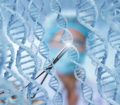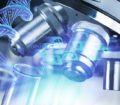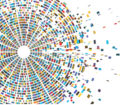Researchers from San Diego State University and the US Military Academy have found that post-9/11 combat veterans rely more heavily on disability compensation and are less likely to pursue a college degree than their non-combat counterparts. SDSU economic professor Joseph Sabia and US Military Academy economics professor William Skimmyhorn surveyed Army administrative data, which has not been made public, to examine the economic impacts related to combat exposure.
Their study, “War! What Is It Good For? The Effects of Combat Service on Economic Transitions of Veterans,” will be published in the Economic Self-Sufficiency Policy Research Institute Working Paper Series. “Uncovering the labor market effects of Global War on Terrorism-era combat service is critical, not only to better assess the full social cost of recent conflicts, but also to inform policymakers as they design effective transition assistance programs for separating service members,” Sabia says.
Scientists at the Scripps Research Institute have figured out how to build on existing research and quickly turn skin cells into neurons, which could open the door for studying common brain conditions such as autism, schizophrenia, addiction and Alzheimer’s disease under reproducible conditions in a dish. Their so-called neuronal cookbook, published in the journal Nature, includes more than 70 recipes or codes for neuronal production. The new synthetic neurons started to grow synapses and tried communicating with each other, researchers said.
“Having a personalized and nearly unlimited supply of different types of neuronal cells in a dish lets you uncover what’s going wrong in a disease. At the same time, the study supplies a new toolkit to test thousands of drugs on the affected cells to try to reverse the problems, rather than having to test them in mice or other animals, with results that are often difficult to interpret for human conditions,” says the study’s senior author, TSRI professor Kristin Baldwin. However, the scientists conceded that more work needs to be done to understand this complex development in detail.
Over at the Salk Institute, researchers are working to figure out why our brains are so susceptible to age-related diseases like Alzheimer’s or Parkinson’s diseases. They say a better understanding of the effects of aging on mitochondria could reveal more about the link to age-related brain diseases and have come up with a new way to simulate the natural aging process in the mitochondria skin cells converted to neurons (see above). “Most other methods use chemical stresses on cells to simulate aging,” says senior author Rusty Gage, a professor in Salk’s Laboratory of Genetics. “Our system has the advantage of showing what happens to mitochondria that age naturally, within the human body.”
TSRI researchers found that mitochondria in the skin cells showed few age-related changes, but once those cells were converted to neurons, mitochondria from older donors were significantly different. The study was published in Cell Reports.


























